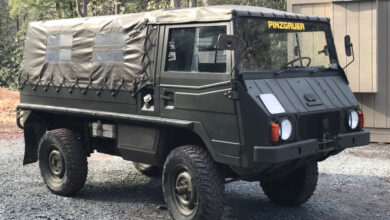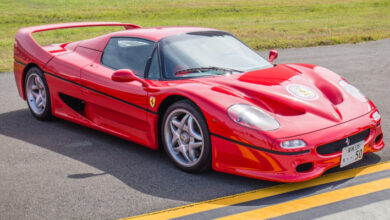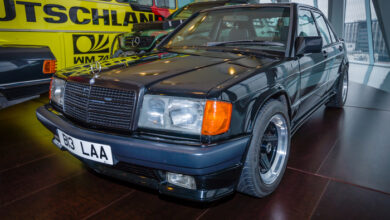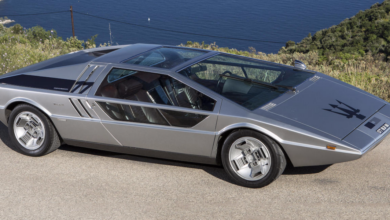Gaining Traction with the 1983 Audi Quattro
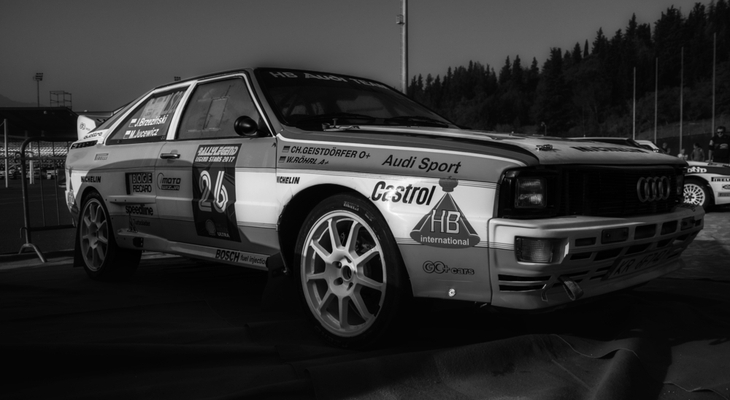
Long before the word Quattro meant Audi’s patented all-wheel drive system, it was the name for one of their models. Quattro is the Italian word for the number four, which Audi, a German automaker, decided to use for their AWD technology. The fancy name stuck and eventually would boast its badge on almost every Audi model in the future.
In the early 80s, Quattro was simply the name for a 2-door, mid-size sporty coupe that many people use as a rally car. Rally racing can be a blast and AWD only makes it more enticing for many drivers. Thus, the 1983 Audi Quattro instantly found a cult following among rally racing enthusiasts worldwide.
Even though the 1983 Audi Quattro is perfect for rally driving, this is a street-legal, road-going car. However, Audi did use this car in rally races. They were the first company to take advantage of a rule change allowing 4-wheel drive in competitive races.
Audi won competitions for two years in a row, in fact, they dominated by a mile. From that point on, Audi vehicles featuring their AWD system earned the Quattro badge. The first one was the B2 platform Quattro model.
On top of the AWD system, the 1983 Audi Quattro features an independent front and rear suspension setup. This gives the Quattro outstanding handling for its era, especially in combination with the Quattro AWD system.
Not every idea gains enough traction to make it to the concept stage when it comes to automotive engineering. In 1977, Audi’s chassis engineer discovered the Volkswagen Iltis’ incredible ability in the snow. From there, Audi began developing what would become the Quattro system.
Of course, the idea of combining an AWD system with a high-performance car really began taking off after the Audi Quattro. Fast forward to today and the market is full of high-performance AWD machines. In some ways, Audi pioneered the modern era with their Quattro development.
Did You Say 5 Cylinders? Don’t You Mean 4-Banger?
Sometimes enthusiasts call the original Quattro model the Ur-Quattro. Audi introduced the Quattro model to the European market in the year 1980. They did not bring the Audi Quattro to the North American market until the 1983 model year.
By then, there had already been some AWD car options in North America. In 1975, the Subaru Leone station wagon offered part-time 4WD as an optional upgrade. Then, of course, there was also the AMC Eagle.
However, the very first company to use a front-engine, AWD layout using a turbo engine was Audi. You would think it would be a turbocharged 4-cylinder considering the era, but it is not.
One of the things that makes the Audi Quattro so unique is the use of an inline 5-cylinder engine under the hood. The base engine is a turbocharged 2.1L inline 5-cylinder engine. It is longitudinally-mounted and features a SOHC design with 10 valves and an intercooler for the turbo.
From here, the specs vary between European and North American models, as is often the case. Plus, Audi only made a limited number of Quattro models available in the North American market. Even though North American models are less powerful, they are very desirable due to their scarcity.
European models feature 197 horsepower with 210 pound-feet of torque at 3,500 rpm. To hear the throaty growl of this inline-5 kick in at a lower rpm brings a little surprising bass with it. You’ll notice the whirl of the turbocharger, then euphoria as you drift around the corner of a dirt road.
With nearly 200 horsepower, the turbocharged engine is impressive for its era. Of course, with AWD, you experience slightly more drivetrain loss than a RWD or FWD vehicle.
Yet, it has some spirit. The base European Audi Quattro model can go from 0 to 62 miles per hour in 7.1 seconds. If you keep going, you can reach a top speed of 143 mph.
As for North American models, Audi shipped them with a lower turbo boost pressure and a different camshaft. They also added emission controlling equipment such as a catalytic converter. Even though North American Audi Quattros only have 160 hp, you can tune them to meet European specs.
North American models do not have ABS, but they do have air conditioning. Audi only exported a total of 664 Audi Quattro models to the United States from 1983 to 1986. They only sold a handful more than that in Canada.
1983 was the first year Audi used a digital LCD dashboard displaying vital information to the driver. Gone were the analog speedometer and tachometer. This LCD dash provides a very nostalgic 80s experience for enthusiasts today.
Overall, this is a driver’s car. Nearly 200 hp with AWD is enough to put a smile on most driver’s faces in a car like this. Toss in the 5-speed manual transmission and you have the ideal recipe for mischievous driving in any weather conditions.
The most desirable version from this model year is the 1983 Audi Sport Quattro. It was only available in Europe, in limited quantities. With 305 horsepower and 243 pound-feet of torque, the 1983 Audi Sport Quattro was 20 years ahead of its time.
Sport Quattro engines are still 2.1L and turbocharged, but they have four valves per cylinder instead of two. This means the 1983 Audi Sport Quattro engine features 20 valves total compared to 10 valves under the hood of base models.
Standard Audi Quattro models are middleweight cars, cashing in at about 2,900 pounds. Some circles claim the 1983 Audi Sport Quattro has a curb weight right around 2,200 pounds.
Imagine approaching a hairpin turn in the Sport Quattro, you’re braking while feeling the rumble of the gravel below. You swing the car around the hairpin with 300-plus hp at your disposal and dust clouds gathering at your wheels. A 5-speed transmission puts you in control, oh yeah, plus you have AWD and the car only weighs 1,000 kg.
Now you understand the appeal and why this remains a car on the radar of so many people around the world. Considering Audi only made a little over 11,000 total Quattro models from 1980 to 1991, it is not easy to get your hands on one.
Market Rally
Plenty of people want a 1983 Audi Quattro, few get to own one. It is not impossible to find a standard model for sale stateside. Recently, a clean 1983 Audi Ur-Quattro upgraded to Euro-specs recently sold on Sotheby’s for $61,600 in January of 2021.
Keep in mind, you will need to remain patient and be ready to make a decision when one becomes available. In some cases you may need to inquire about pricing.
Good luck finding a 1983 Audi Sport Quattro for sale. Although they do exist, would you want to sell if you had one?
If you absolutely must have an Audi Sport Quattro, you might want to begin browsing the European markets. Expect pricing to be above the half-million dollar range. This is a legendary car, the kind that you pay whatever it costs to acquire if you want one.
As enjoyable as they are to drive, most collectors refrain from putting too many miles on their Sport Quattros these days. There are plenty of driving simulators available featuring this car. However, if you talk to anyone who experiences the real thing, the video games don’t quite capture the feeling.
This is a special car. From WRC enthusiasts to people who just love to drive, the Sport Quattro is the einhorn of vintage Audi models. There are not very many of them, only about 214 total during its production lifespan.
Out of those 214 Sport Quattro models, Audi only sold 164 of them to consumers. Audi used the rest of them for racing or as prototypes. Racing versions of the Sport Quattro were at one time the most powerful cars in world rally racing history.
Many drivers of the regular Quattro, or Ur-Quattro, feel that same inspiration when sitting behind the wheel. Every road is an option and you never avoid the scenic route. Should rain or snow fall, you just keep going.
From cornering on dry pavement to sliding in the mud, the Quattro offers AWD confidence with precision handling. You don’t need the exclusive Sport model to experience what the Quattro is all about. Even the standard turbocharged Quattro will inspire your desire to drive, all you need is some open road.
